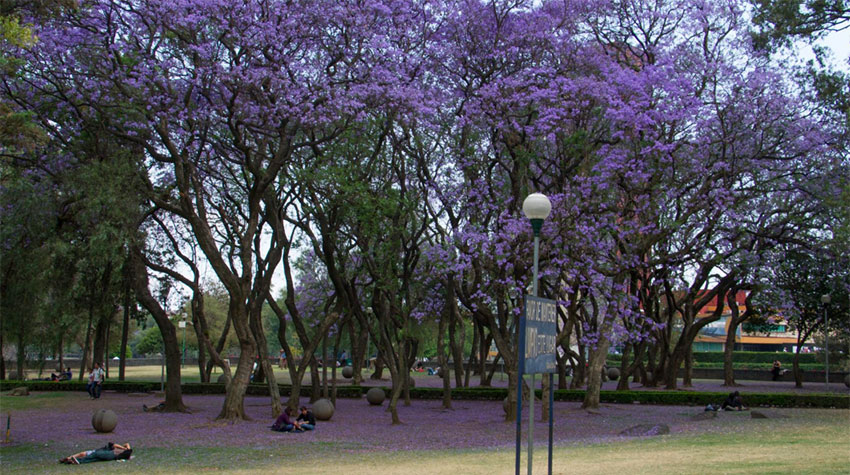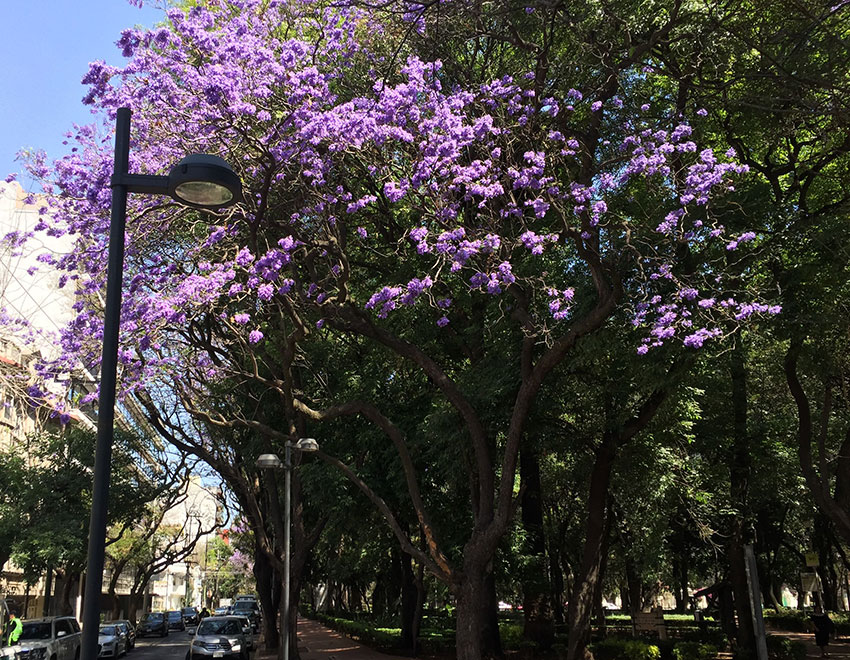The warm weather in February gave one Mexico City spring tradition a head start. The jacaranda trees are already in full bloom, their bright purple blossoms filling their leafless branches like something out of a book by Dr. Seuss.
There are some neighborhoods in the capital where their colorful splendor is on full display. A stroll down the famous Paseo de la Reforma Avenue is an essential start on any jacaranda tour of the city.
The famous stretch of this avenue from the city’s Historic Center to Chapultepec Park is a great place to snap photos of the trees with a famous monument or two in the background. The avenue continues to dazzle as it extends through the Lomas de Chapultepec neighborhood, to the west of the park.
Popular with tourists, the Condesa neighborhood also has a couple of fine spots for viewing jacarandas. Parque México and Parque España are both lit up purple in the month of March.
Horacio Street in the ritzy neighborhood of Polanco, north of Chapultepec Park, is also lined with jacarandas, as are the streets of Concepción Beistegui and Nicolás San Juan in the Colonia del Valle neighborhood, to the south of the Roma district.

Further south, the Ciudad Universitaria, the sprawling campus of the National Autonomous University boasts lots of jacarandas whose purple blooms drift like snow over the black volcanic rock of the Pedregal area.
Just beyond, the Bosque de Tlalpan Park is a great place to view the trees in a less urban setting.
Not native to Mexico, jacarandas were brought here from South America by Japanese gardener Tatsugoro Matsumoto at the beginning of the 20th century. The tree is native to Brazil, where it is called yacarandá.
There are a couple of versions to the story of how Matsumoto filled the city with the purple trees. The most widely accepted is that a wealthy landowner from Hidalgo brought Matsumoto to Mexico after the Revolution to design a garden for him.
The capital at that time was expanding out from its Historic Center, and neighborhoods like Roma and Condesa were attempting to carry on the European style of architecture and city planning promoted by Porfirio Díaz.
It is said that Matsumoto fell in love with the city and decided to make it his home. The trees became a popular element in people’s private gardens. His work became famous throughout the country, and now jacarandas can be found from Oaxaca to California.

Although there is no documentation to back it up, another version of the story claims that Matsumoto was sent by the Japanese government to work with Mexican authorities to have them adopt the jacaranda tree as a Mexican version of Japan’s famous cherry blossoms.
No matter which version of the story is true, people today are grateful for Matsumoto’s work and flock to the streets in search of that perfect purple photo for their social media profiles.
Act quickly, because the magic doesn’t last long. Deep green leaves will soon replace the purple blooms, and you’ll have to wait until next year to see them again.
Sources: El Heraldo de México (sp), La Verdad (sp)
